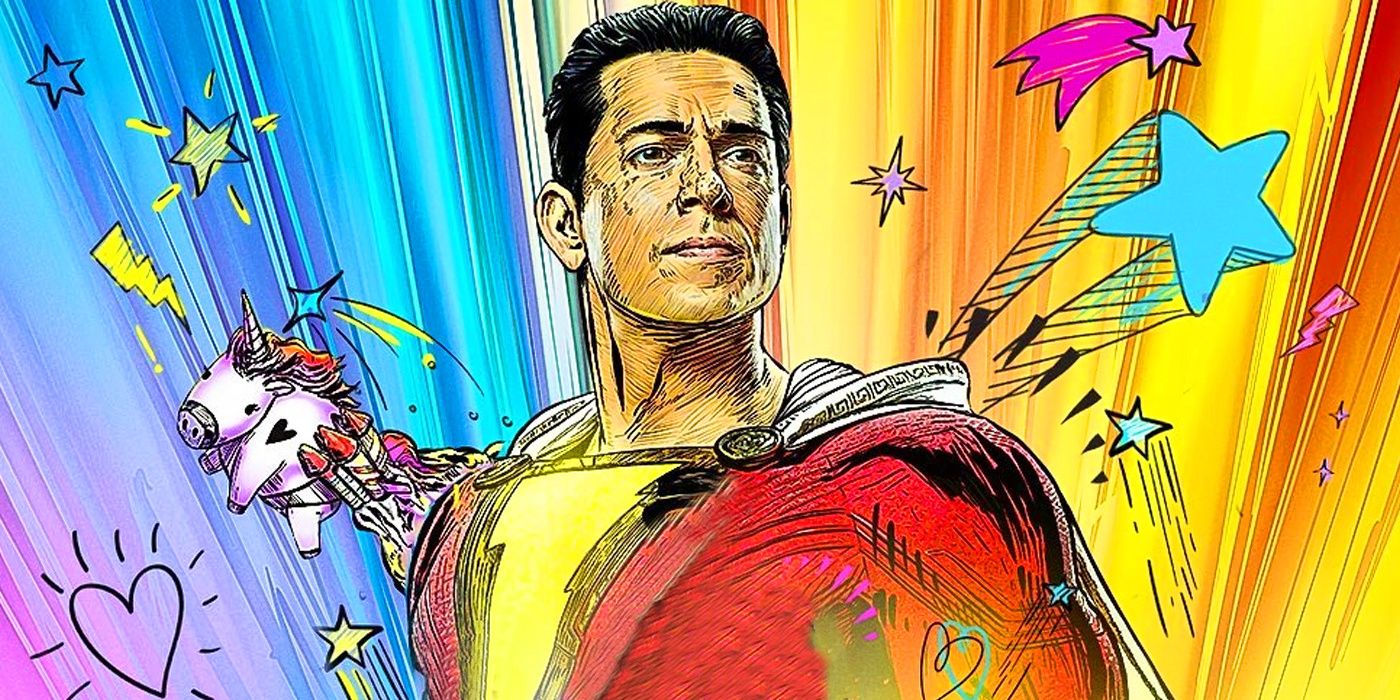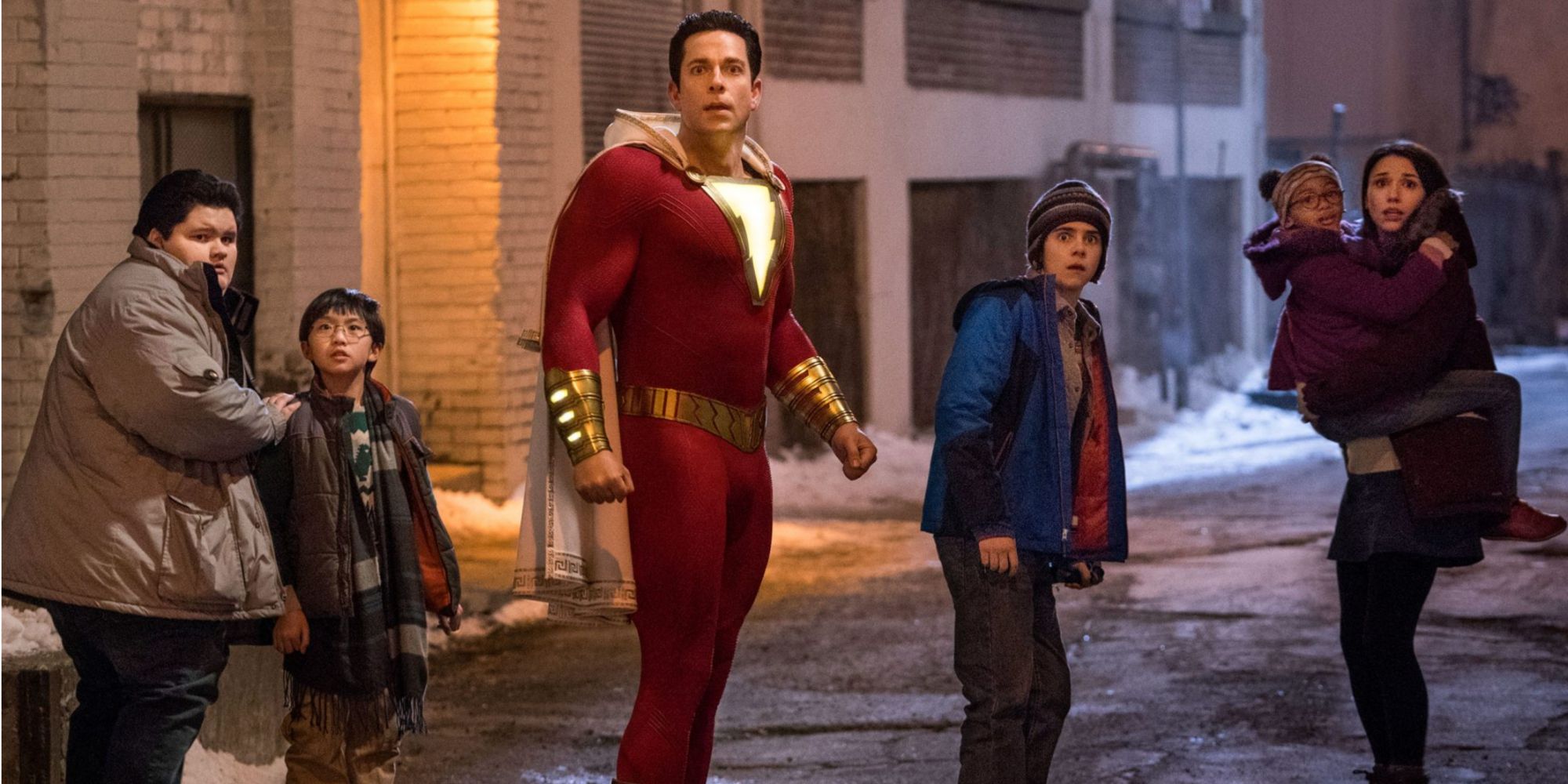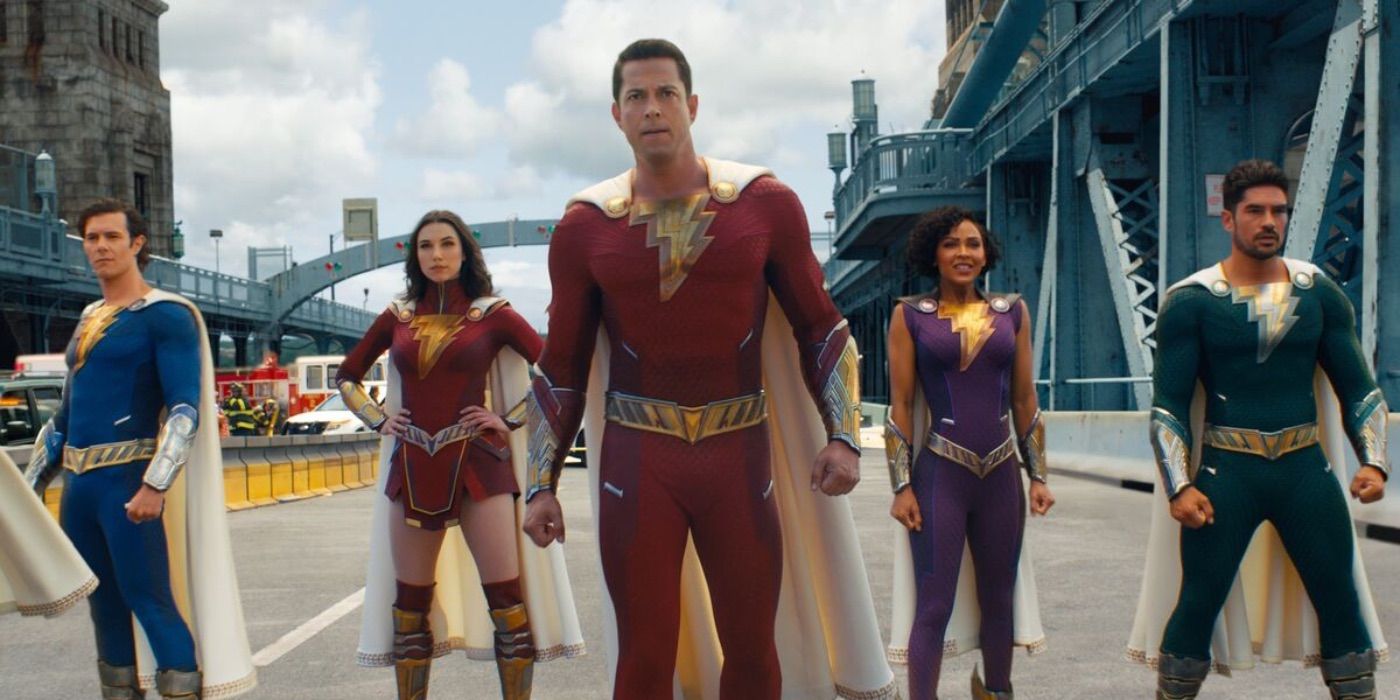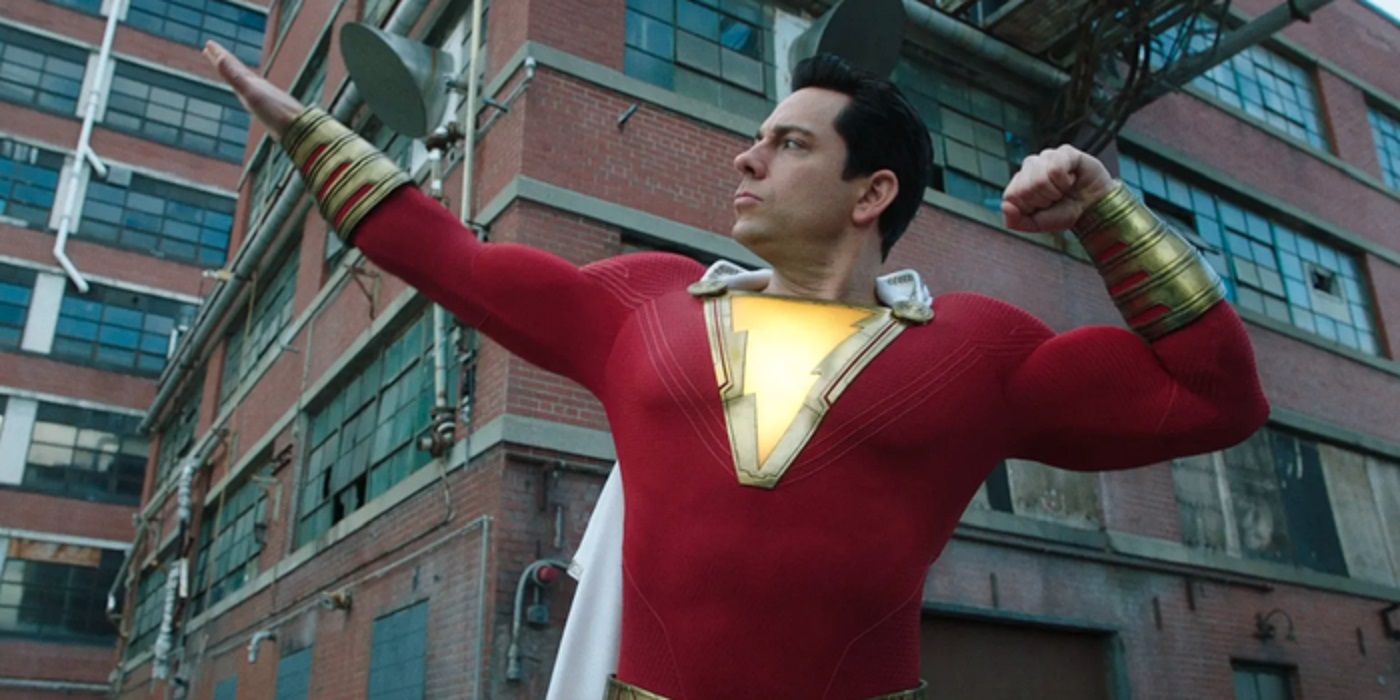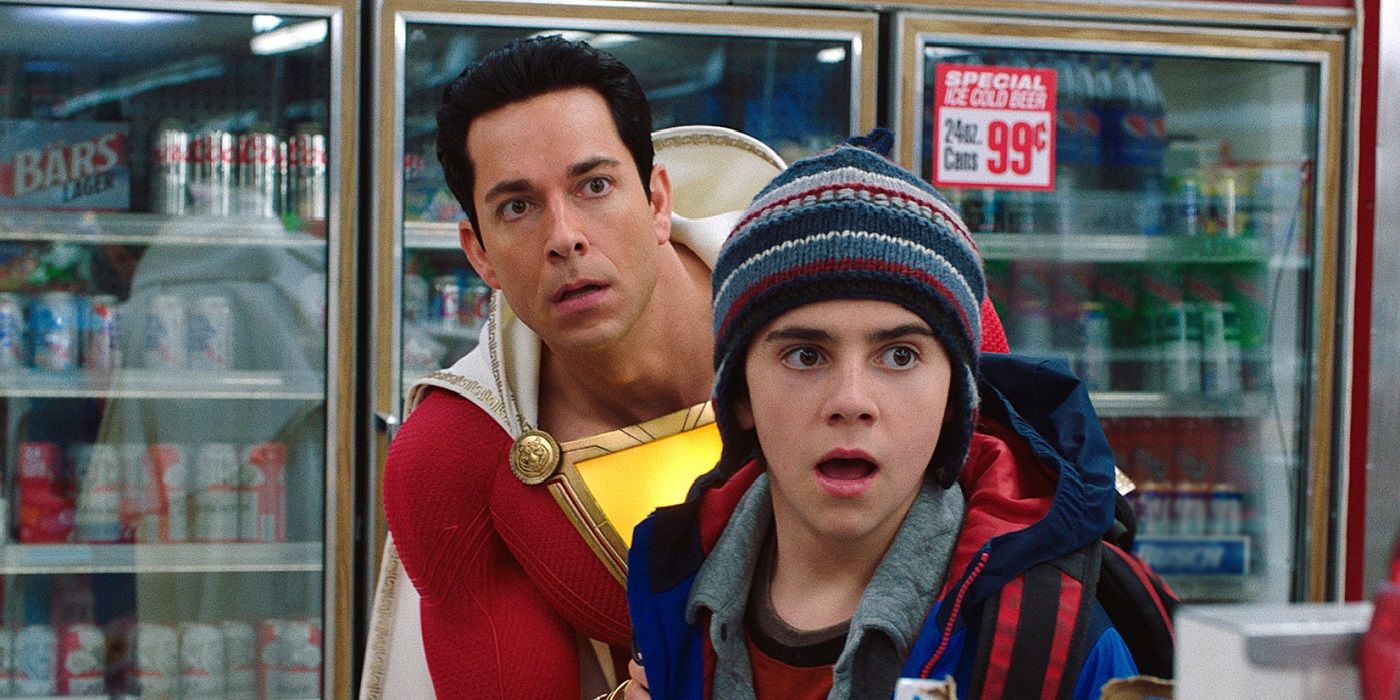Captain Marvel, aka Shazam, first appeared in 1939 in Whiz Comics #2 (fun fact: there is no #1) from Fawcett Comics, a year after Superman exploded onto the scene. He was popular, and in fact was the most popular superhero of the 1940s, outselling Superman, and was the first superhero to be adapted to film, in the 1941 Republic Pictures serial Adventures of Captain Marvel. And that’s just the beginning of the crazy comic book history of Shazam, leading up to the March 17 release of DC's Shazam! Fury of the Gods.
Captain Marvel Begins
The arrival of Superman kicked off the Golden Age of comics, and everyone wanted in on the heroes-in-tights trade. Fawcett Comics first entered into the fray with Masterman, but the threat of a plagiarism lawsuit with DC ended him quicker than any super-villain could. Looking for a new angle, circulation manager of Fawcett Comics Roscoe Fawcett told creators CC Beck and Bill Parker, "Give me a Superman, only have his other identity be a 10- or 12-year-old boy." At the time, Parker had written a story about a team of six superheroes, each with a special power given to them by a mythological figure. It was Executive Director Ralph Daigh that suggested the idea of combining the six powers into a single hero. That hero would become Captain Thunder. Except that was already being used, so he became Captain Marvelous. Except that was already not being used, but just lame. Thus was born Captain Marvel.
The way his story begins is a little sketchy in today's eyes, with 10-year-old orphan Billy Batson being lured by a mysterious stranger to a driverless subway car that takes Billy to an underground tunnel, and into the lair of the wizard Shazam. The wizard knows all about Billy, and grants him the power to become the superhero — adult superhero no less — Captain Marvel. To do so, Billy had to call out the name of the wizard, which is an acronym for the powers he is given: the wisdom of Solomon, the strength of Hercules, the stamina of Atlas, the power of Zeus, the courage of Achilles, and the speed of Mercury (with an exclamation point at the end, because, dammit, this is serious). Once the name is spoken, a magic bolt of lightning strikes Billy, turning him into Captain Marvel, while speaking it again causes another bolt of lightning that changes him back into mild-mannered Billy.
Captain Marvel Takes Off
The unique spin to the character paid off. Children could relate to Billy, and to be able to transform into an adult superhero gave insight into the secret wish of hundreds of kids to do the same (you're welcome, Big). Soon, the Captain Marvel universe would expand with the introduction of the Marvel family. Captain Marvel Jr., aka orphan Freddy Freeman, who is severely wounded (and would end up with a permanently lame left leg) due to a battle between Captain Marvel and Captain Nazi, granted powers by Shazam by saying "Captain Marvel," and Mary Marvel, aka Mary Batson, the twin sister of Billy, who discovers that saying "Shazam" transforms her as well (slightly different power set: Selena's grace, Hippolyta's strength, Ariadne's skill, Zephyrus's fleetness and flight, Aurora's beauty, and Minerva's wisdom — and 20 years before Supergirl). Then others arrived, like Hoppy the Marvel Bunny (same powers), Uncle Marvel (no powers) and, for some reason, the talking tiger Mr. Tawny. The first villain in Captain Marvel's rogue's gallery was Doctor Sivana, who would soon be joined by evil alien caterpillar Mister Mind (teased in the credits scene of Shazam!) and his most iconic foe, Black Adam.
Captain Marvel No More
At the height of his prime, Captain Marvel would face a foe that he could not defeat: National Comics (now DC Comics). More specifically, a lawsuit that alleged Captain Marvel was too similar to Superman in many ways, even outright mirroring Superman's actions. The copyright infringement case begat one of the longest-running legal battles in comic book history, a whopping 12 years. Fawcett initially won on the basis that the publisher of Superman comics neglected to add the copyright symbol on many of their strips, so DC had no copyright to Superman. For two years, anyone could publish Superman stories, until DC appealed, and the decision was reversed. Fawcett was forced to cease all publications and pay DC damages, settling on $400,000 ($4 million or so today) in compensation. To add insult to injury, the publication ban would lead to the lapse of Fawcett's trademark on the phrase "Captain Marvel." This allowed Marvel Comics to swoop in and use "Captain Marvel" for its own branding in 1967 (Fawcett still had the copyright, so the origin, costume, and comics were still theirs).
Captain Marvel Shazam Lives
DC Comics would obtain the rights to use Fawcett's characters, including Captain Marvel, in 1972. Because Marvel owned the trademark for the name, though, the character was introduced to DC in a series entitled Shazam! The World's Mightiest Mortal. The series rather cheekily added the tag line "The Original Captain Marvel" but was forced to give that up.
The series was an important one in the history of the character. DC had the option to simply never use the hero ever, but instead made Captain Marvel (who was already being called "Shazam" by comic fans) and the Marvel Family canon; not in the main continuity, but on the multiversal Earth-S. The classic 1985 series Crisis on Infinite Earths brought Earth-S and other universes into the main continuity. Then, in 1991, DC Comics purchased the rights directly, legally bringing Captain Marvel and the gang into the DC Universe. Captain Marvel would go on to appear in his own series Power of Shazam! and The Trials of Shazam! before DC's ambitious New 52 rebranding, after which he seemed to simply disappear. In 2018, Captain Marvel, now officially Shazam, resurfaced in his own series, written by Geoff Johns, bringing fresh ideas to the character and his origins, and reconnecting readers to the hero, many of which were no longer familiar with him. Now, with one film under his belt and a second arriving soon, Shazam is, finally, back in the spotlight.

